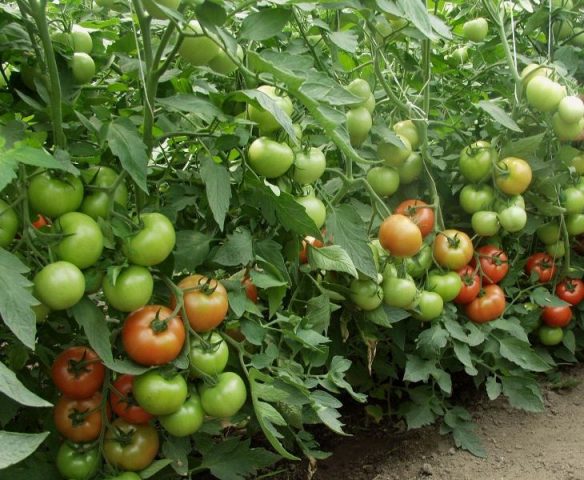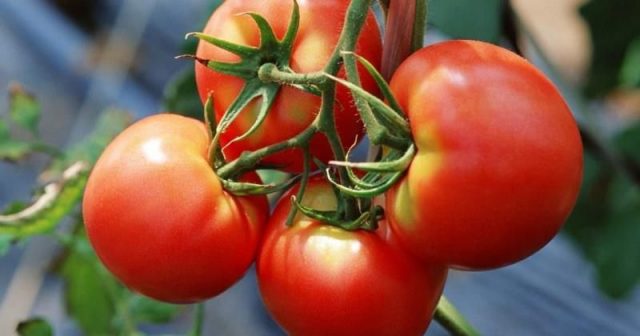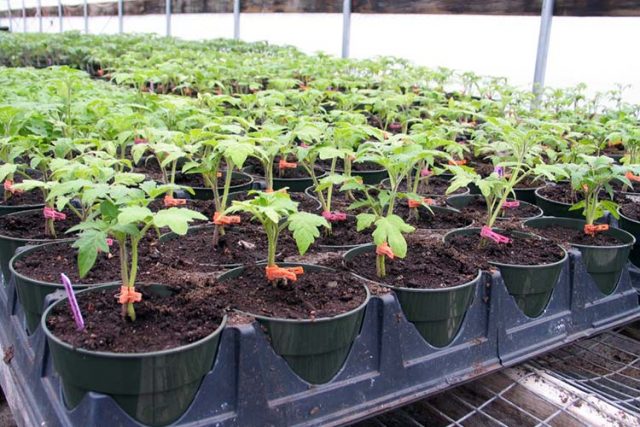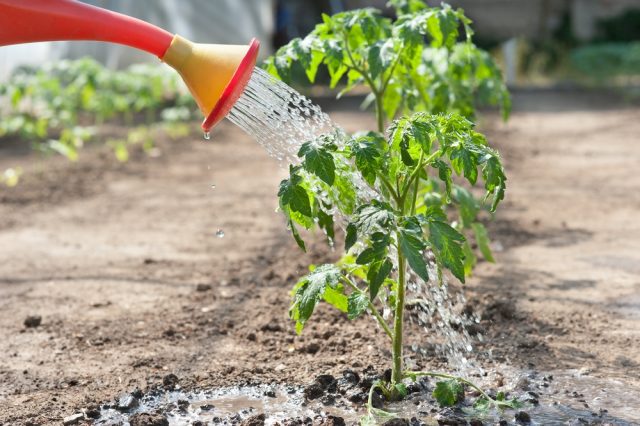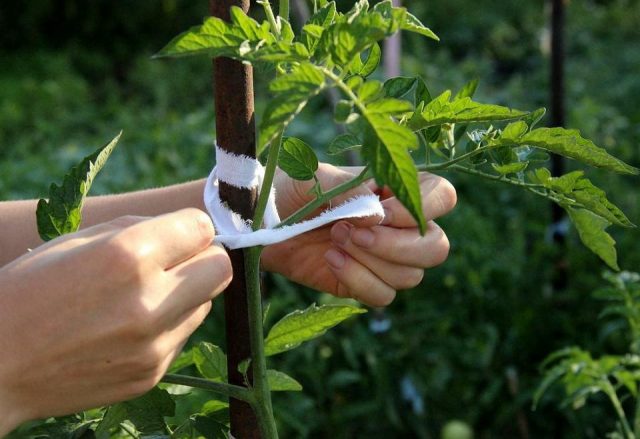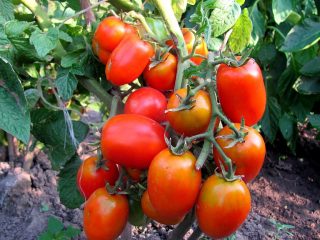Content
Tomato Snowfall F1 is a late-ripening hybrid of the first generation with medium-sized fruits. Relatively unpretentious in cultivation, this hybrid has the fruits of a moderately sweet taste and rich aroma. The variety is highly resistant to disease. Next, a description of the Snowfall tomato variety will be considered, a photo of the plant is given and reviews of gardeners who grow it are presented.
Description of tomato variety Snowfall
Tomato variety Snowfall is a hybrid of the first generation, the originator of which is the Transnistrian Research Institute of Agriculture. Tomato is equally well suited for growing both in greenhouses and outdoors. It is a high-yielding hybrid of the first generation with indeterminate shrubs up to 2 m high.
Tomato Snowfall is a moderately spreading bush with a large amount of green mass, which needs mandatory formation. The stem is thick, green in color, with barely noticeable edges. The leaves are simple, five-lobed, small in size.
The flowers are small, up to 12 mm in diameter, collected in brush-type inflorescences. Usually, the inflorescence contains up to 10 flowers. Tomato Snowfall has a high percentage of set, almost all flowers form fruit.
Fruit ripening occurs simultaneously in the entire cluster, the fruiting period from the moment of planting the seeds to full ripeness is from 4 to 5 months, depending on the growing conditions. To speed up the growing time, the plant needs more heat and light.
Brief description and taste of fruits
In the clusters, 8 to 10 medium-sized fruits form and develop at the same rate. Fruit weight reaches 60-80 g when grown outdoors and 80-130 g when grown in greenhouse.
The shape of the fruit is round, closer to the stalk, they have a slight ribbing. Ripe fruits have a uniform red color. The flesh of the fruit is moderately firm, moderately juicy and fleshy.
The taste of the fruit is assessed as rich, sweetish, with a delicate aroma. The area of application of the fruits is very wide - they are used both fresh and processed. The fruits of the Snowfall are used in salads, sauces, first and second courses, they perfectly tolerate conservation and freezing. The sugar content is high enough (more than 5%), which makes it possible to use the fruits in baby food.
The skin of the fruit is thin but firm. This circumstance guarantees the Snowfall tomato good preservation and transportability.
Photo of tomato fruits Snowfall is shown below:
Varietal characteristics
The yield of snowfall is up to 5 kg per 1 sq. m. in the open field. In greenhouses, with proper agricultural technology, it is possible to obtain similar yields from one bush. Fruiting times are up to 120 days for greenhouse cultivation and about 150 days for open field cultivation. Usually, fruits are harvested before the first significant cold snaps.
Factors affecting yield are sufficient heat and abundant watering.
Tomato Snowfall is resistant to the main diseases of tomatoes: almost all fungi and the tobacco mosaic virus.In very rare cases, the defeat of the bushes by anthracnose and alternaria is observed.
Pros and cons of the variety
After reviewing the description of the Snowfall tomato variety, you can highlight its positive and negative qualities.
Pros of tomato Snowfall:
- high yield rates;
- excellent taste of fruits;
- unpretentious cultivation;
- beautiful exterior of ripe fruits;
- good keeping quality and transportability;
- versatility of use;
- the possibility of growing in a greenhouse and open field;
- high resistance to most tomato diseases.
Cons of Tomato Snowfall:
- sensitivity to temperature changes;
- intolerance to low temperatures and frost;
- low drought resistance;
- the need for the formation of a bush and the constant removal of stepchildren;
- the need to tie up branches;
- with large volumes of the green part of the plant, a decrease in the weight of the fruit is observed.
Nevertheless, according to the totality of its characteristics, the Snowfall tomato can be attributed to quite successful and deserving attention when choosing as a candidate for breeding.
Planting and care rules
Tomatoes Snowfall f1 in breeding practically repeat any tomato crop. The cultivation features concern only the timing of planting seedlings and the formation of a bush in adult plants. The rest of the growing rules and requirements for them are the same as for other varieties of tomatoes.
Sowing seeds for seedlings
Tomato Snowfall f1 should be planted in mid to late February for cold climates (or greenhouse cultivation) or mid March for outdoor cultivation.
The composition of the soil for seedlings can be virtually any, the main requirement is high nutritional value and neutral acidity. It is recommended to mix garden soil, humus and river sand in equal proportions. A small amount of ash or superphosphate can be added to the soil. Instead of humus, you can use peat, but in this case the proportions will be slightly different: earth and sand - 2 parts each, peat - 1 part.
Preliminary disinfection of the soil is optional. Before planting, it is advisable to disinfect the seeds by pretreating them with a solution of potassium permanganate or hydrogen peroxide.
You can plant seeds in containers, but it is better to use individual containers in the form of peat pots, since this will preserve the plant's root system during transplantation, and also eliminate the need to pick plants.
Planting is carried out in small holes 1-2 cm deep, 2 seeds in each hole. When using containers, furrows are made with a depth of 1.5-2 cm with a distance of 5-6 cm between them. Planting seeds is carried out one at a time, after 2-3 cm.
Next, the usual actions for tomato seedlings are performed - the seeds are sprinkled with earth, watered and covered with a film. Place pots or containers in a warm and dark place until emergence. As soon as shoots appear, the film is removed, and the seedlings are transferred to the sun with a decrease in temperature by 3-5 ° C.
The first feeding of seedlings is carried out after the appearance of two true leaves, it is carried out using complex fertilizer. If time permits, re-feeding of seedlings is allowed, but it should be carried out at least 10 days before transplanting the plant into a greenhouse or open ground.
Transplanting seedlings
Transplanting in a greenhouse is carried out in the second decade of May, in open ground - in early June. Plants are planted in open ground according to the 50x60 cm scheme; in greenhouses, cultivation is mainly used in one or two rows with a distance of 70-80 cm between the bushes. The distance between the rows is at least 1 m.
A week before transplanting, the seedlings should be hardened. In the first 2 or 3 days, the seedlings are taken out in the greenhouse or in the open air for several hours, then for half a day, the last two days for the whole day.At night, the plants are removed indoors.
The transplant is best done in cloudy weather or in the evening. After transplanting, it is necessary to compactly compact the soil and water the young tomatoes abundantly.
Tomato care
Caring for a tomato Snowfall is practically no different from growing ordinary tomatoes. It includes regular watering (2-3 times a week) and several dressings. The first is done a week after transplanting, it includes nitrogen fertilizers (ammonium nitrate or urea) in the amount of 25 g per 1 sq. m. The second consists of phosphorus-potassium fertilizers, it is carried out a month after the first. A third (also phosphorus-potassium) is also allowed, a month after the second.
Features of growing Snowfall are in the special formation of bushes. It begins immediately after transplanting and continues all the time, until fruiting. The ideal option for the formation of a bush is one- or two-stem. In this case, the permanent removal of stepchildren is made. The bushes of the tomato variety Snowfall are quite high, so they must be tied to trellises or supports as the fruits ripen.
It is desirable to use mulch in the form of peat or sawdust. This will help get rid of most pests and simplify the process of caring for tomatoes, saving the owner from the need to constantly loosen the soil and remove weeds.
In case of damage to the plant by a fungus, copper-containing preparations are used (copper sulfate or Bordeaux mixture). In this case, the affected areas of the plants should be completely removed. Pest control is carried out with conventional insecticides or decoctions of onion husks or celandine.
Conclusion
Tomato Snowfall F1 is a late-ripening variety with fruits of universal application. It is an excellent plant for both greenhouse and outdoor cultivation. Its fruits have excellent taste, they can be stored for a long time and can be transported over long distances.
Reviews of tomato Snowfall F1

